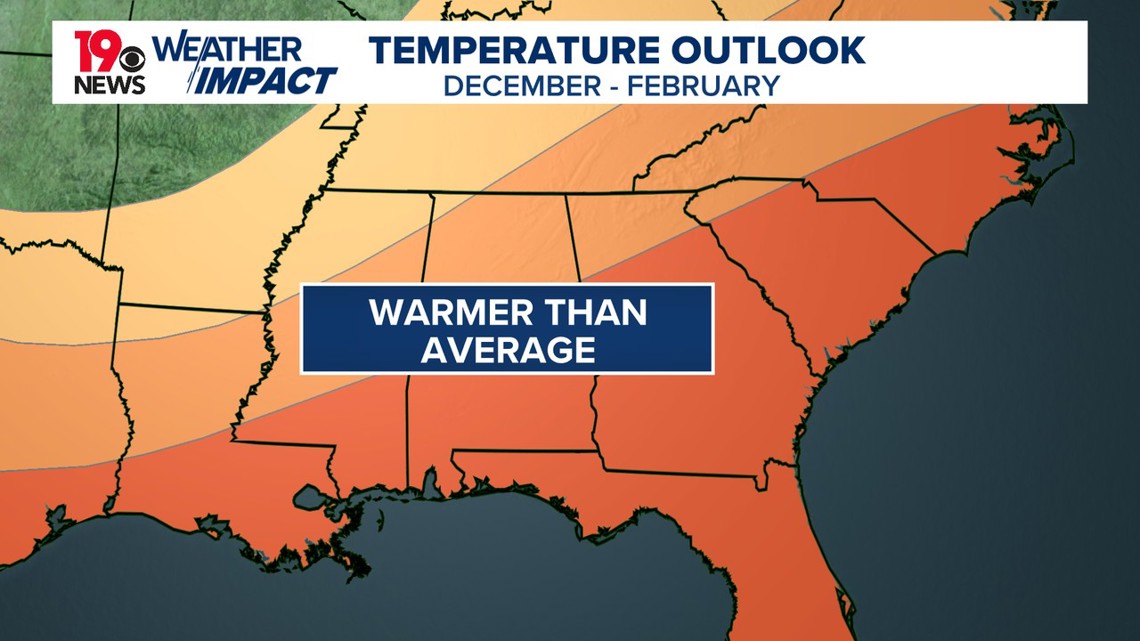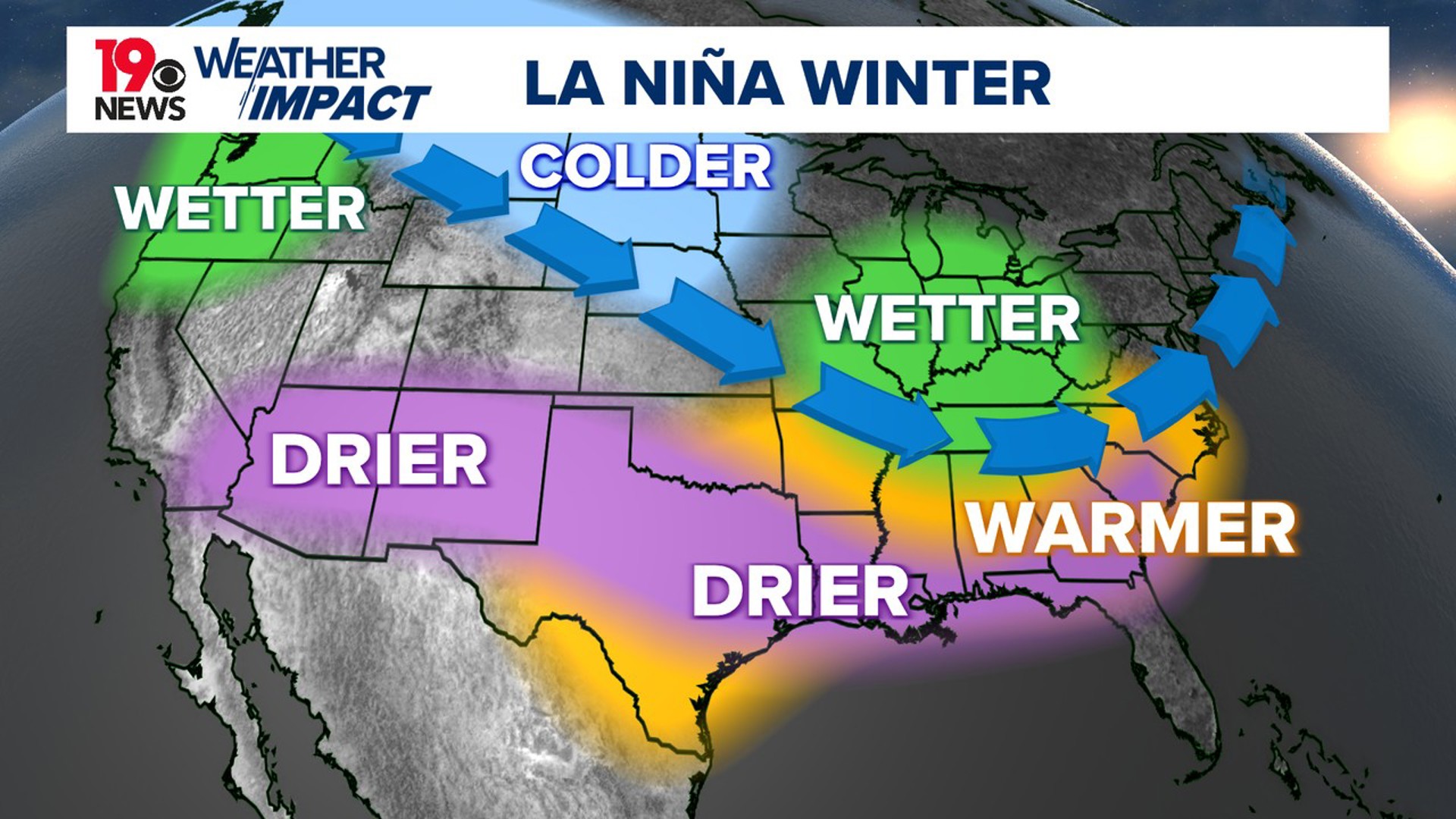COLUMBIA, S.C. — Winter in the Southeast U.S. is expected to be warmer and drier than normal due to La Niña conditions in the Pacific Ocean. According to the Climate Prediction Center of the National Weather Service, this phenomenon is likely to shape winter weather patterns across the nation.
Winter is defined by meteorologists to be the three calendar months with the lowest temperatures on average. This would be the months of December, January, and February.
Jon Gottschalck, chief of the CPC's Operational Prediction Branch, explained, “An emerging La Niña is anticipated to influence the upcoming winter patterns, especially our precipitation predictions.”
The forecast, released in October, suggests that while wetter-than-average conditions will dominate the northern U.S., including the Pacific Northwest, Great Lakes, and parts of Alaska, drier-than-average conditions are expected from the Four Corners region of the Southwest to the Gulf Coast, Southeast, and lower mid-Atlantic states.


The National Oceanic and Atmospheric Administration predicts a 60% chance of a weak La Niña forming by the end of this month and persisting into early 2025. This shift is expected to cause winter storms to track further north, leaving the southern U.S. drier and warmer.
However, this outlook does not rule out occasional cooler or wetter periods in South Carolina from December through February. Columbia has not received measurable snow since January 22, 2022.
La Niña, characterized by cooler-than-average sea surface temperatures in the central and eastern equatorial Pacific, contrasts with El Niño, which brings opposite effects. During El Niño, warmer waters in the Pacific shift the jet stream southward, leading to wetter conditions in the Southeast and drier weather in the northern U.S. These patterns, which occur every two to seven years, significantly impact global weather by altering wind and rainfall patterns across the tropics.


Episodes of El Niño and La Niña typically last 9–12 months, but their strongest influence in the U.S. occurs during winter. La Niña conditions can also intensify Atlantic hurricane activity while reducing storms in the East Pacific. This dynamic contributed to NOAA’s forecast of an above-average 2024 hurricane season.
In South Carolina, the warmer and drier winter weather expected with La Niña increases the risk of drought in early 2025. NOAA’s drought outlook suggests this could lead to a heightened wildfire risk later in the season and into spring.
Elsewhere, drought conditions in the central and southern Plains are forecasted to persist and worsen, reflecting the broader impacts of La Niña on the U.S.

